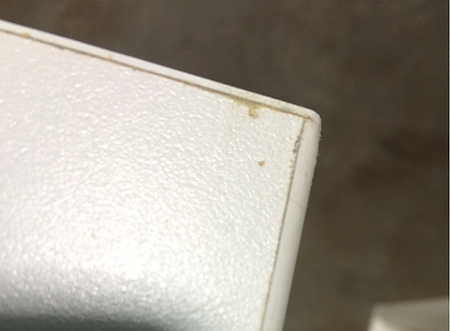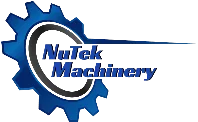Edgebander issues? Don't blame your edgebander till you consider this
Published by Rob Young in Edgebanders · Monday 23 Dec 2019
Tags: edgebanders, edgebander, edge, bander, zero, glue, line, invisible, glue, line
Tags: edgebanders, edgebander, edge, bander, zero, glue, line, invisible, glue, line
Edge Banded Panel Quality Begins With Panel Presentation.
Edgebanders have a reputation of being machines that require constant tinkering and adjusting to produce a panel that requires zero to very little rework. This may be true in many instances. The quality and design of your edgebander directly affects the amount of wasted employee hours trimming and cleaning panels but the edgebander isn’t always the culprit. If you have purchased a high quality, well designed edgebander like the OTT edgebander line NuTek offers and don’t produce panels that are ready for assembly or to ship when they are processed through the machine than you might want to look at your processes prior to the edgebander. This of course assumes you perform regularly scheduled maintenance and when necessary replace worn or broken parts.
Producing a perfectly trimmed and contoured panel with little to no glue line begins with the quality of the panel being processed. If the board is of poor quality or the sizing process results in boards that are chipped or out of square the most reliable edgebanders on the market won’t be able to produce a perfect or near perfect panel.
Hopefully, some of the obvious yet overlooked issues will provoke a change to the processes that affect finished panel quality. I’ve been called to facilities on more than one occasion to work on an edgebander to discover most of the issues were the result of the processes prior to the edgebander. This isn’t a complete list of every panel issue I’ve seen, only the most common issues that leave owners, managers, and operators frustrated. Hopefully, some of the obvious yet overlooked issues will provoke a change to the processes that affect panel quality.
Panel Quality
Poor quality panels force operators to compensate with constant machine adjustments. Here are a few examples of how poor-quality panels cause issues in the edgebanding process.
- Loose core and excessive voids in particle board- a loose core will telegraph all the panel defects through thin PVC edgebanding resulting in an edge with dimples and one that can easily be pulled away from the panel. Operators often deal with this issue by increasing the amount of glue applied to the edge to “fill the voids”. This may help with the appearance of the applied edge, but the excessive glue will also squeeze out on to the top and bottom of the board. This excessive glue then attaches to pressure rollers, copy wheels, trim motor tooling, scrapers, dust brushes, and buffing wheels. Excessive glue also plugs dust collection ports and leaves trimmings to stick to boards and copy wheels resulting in inconsistent panel trimming. Operators must devote additional time to clean the machine to keep everything functioning properly. Cheap panels may seem like a cost savings initially, but it might surprise shop owners and purchasing agents how little is saved when factoring in the additional hours of rework and cleaning necessary to produce a quality looking panel. Poor panel quality can also affect the reputation of your company.

The Machining Process Matters
- Panels that are chipped, scalloped, or have visible scoring lines- you won’t be able to produce an invisible or near invisible glue line if your panels edges aren’t clean. If you want to know how edgebanding is going to appear on the edge of your board try this, take two panels and rotate the panel edge from one of the panels and place it on the face of the other panel. Look closely at the appearance of the seam of the panel on its edge. This resembles closely what you can expect to see when you apply edgebanding to it. Chipped melamine or laminate will be obvious when it’s banded. Scalloped cuts (if cut on a panel saw this is often the result of worn saw carriage rollers) will show glue and on thicker edgebanding gaps between the edgebanding and panel. If the chipping, scallops, or scoring lines aren’t to excessive premill units will be able to clean up the edges.

- Panel squareness- panels that aren’t square will manifest problems in the end trim and corner rounding stations. You’ll find end trimmers cutting into panels or leaving tabs. Corner rounding units will cut into perpendicular sides or leave bumps that you can feel. Single sided edgebanders can’t produce square panels from out of square ones. You may need to have your panel, table saw, or CNC serviced and tuned. If you fail to recognize the issue is with the squareness of the panel you’ve fed in than you’ll find it necessary to constantly adjust the end trim and corner rounders, never quite able to dial them in.
There are of course other machining issues to consider such as perpendicularity of the machined edge. Hopefully reading through this blog will lead to examining processes that take place prior to your edgebander and an understanding of how important proper panel presentation is if you want to get the most out of your edgebander. For those companies interested in producing a panel that is ready for assembly or shipping and need to address the edgebander in use, contact NuTek Machinery for your sales and service needs. NuTek will provide the highest level of service. Our product specialists experience working in actual cabinet shops will translate into a better understanding of your needs and the right solutions when making machine purchases.


